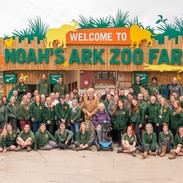Swimming, gym and outdoor safety
Photo by: VisitBritain/Helena Bradbury

Disclaimer
Disclaimer: While every effort has been made to ensure the accuracy of the information contained in the Pink Book, we regret that we cannot be responsible for any errors. The Pink Book contains general information about laws applicable to your business. The information is not advice and should not be treated as such. Read our full disclaimer.
Key facts
There are no specific regulations on swimming pool or gym safety, but you must manage these activities so that they comply with health and safety legislation.
Anyone who sells adventure activities intended for people aged under 18 must be inspected and licensed under the Adventure Activities Licensing Regulations 2004.
Swimming and gym safety
Drownings in swimming pools in the UK are rare. However, this does not mean that you should not pay particular attention to the safety of guests and staff around pool areas.
General legislation that applies
Currently, there is no specific legislation on swimming pool or gym safety. These are covered by general health and safety regulations. Your main responsibility as a pool or gym operator, in relation to the safety of your guests or clients, is to be found in the Health and Safety at Work, etc Act 1974 and the Management of Health and Safety at Work Regulations 1999.
See the sections on the Health and Safety at Work Act and Safety management for more information.
Safety in swimming pools is a complex subject, and should be studied closely by those who manage them. A thorough risk assessment should be carried out: among other things, this will determine whether constant supervision is needed. This risk assessment should include topics such as:
- Slipping and tripping;
- Signage;
- Water depth and any changes of level;
- Water clarity;
- The availability of alcohol or likelihood of swimming after drinking;
- Child protection issues;
- Unsupervised children;
- Hazards in changing areas;
- Life-saving equipment;
- Rescue and emergency arrangements.
Guidance on swimming pools
The Health and Safety Executive (HSE) has published a very useful guide, Managing Health and Safety in Swimming Pools, which provides detailed guidance on the risks associated with swimming pool operation and the precautions which may be taken to help achieve a safer environment. The 2024 updated guide also covers supervision, signage and the use of inflatable toys.
The guide draws on legislation from the Health and Safety at Work, etc Act 1974, the Management of Health and Safety at Work Regulations 1999, the Workplace (Health, Safety and Welfare) Regulations 1992 and the Provision and Use of Work Equipment Regulations 1998.
Outdoor activity safety measures
Anyone who sells adventure activities intended for people under 18 must be inspected and licensed under the Adventure Activities Licensing Regulations 2004.
Do I need an inspection and licence?
Yes: if you provide, in return for payment, any of the activities listed below to young people under 18 unaccompanied by a parent or guardian.
Activities covered by the inspection and licensing scheme
The scheme covers 26 main activities under the following four specified adventure activity groups:
- Caving: underground exploration in natural caves and mines including pot-holing, cave diving and mine exploration.
- Climbing: climbing, traversing, abseiling and scrambling activities, except on purpose-designed climbing walls or abseiling towers.
- Trekking: walking, running, pony trekking, cycling, off-piste skiing, and related activities, when practised in moorlands or more than 600 metres above sea level in an area which is remote (that is, over 30 minutes’ travelling time from the nearest road or refuge).
- Water sports: canoeing, rafting, sailing and related activities when done on the sea, tidal waters or inland waters which are more than 100m across or are turbulent.
The scheme does not cover:
- Activities that are offered to young people who are accompanied by their parents or guardians.
- Activities that are not specified in the regulations, such as high ropes courses or zorbing.
- Activities offered by voluntary associations to their members, or by schools to their pupils.
The activity provider’s duty under the regulations
The primary duty of the activity provider is to ensure the safety of young people using activity facilities. To be able to comply with this duty, providers must have a safety management system in place that involves a systematic approach to recognising risks and ensuring something is done to control them.
Important factors include:
- The risk assessment process;
- The number of competent instructors;
- The suitability and maintenance of equipment;
- Emergency procedures.
The inspection/licensing process
The HSE currently has responsibility for the AALA, and has enforcement responsibility for the Adventure Activities Licensing Regulations 2004.
All of the inspections, and most of the administration work, that the AALA carried out has been contracted to Adventure Risk Management Services (Adventure RMS).
The role of Adventure RMS is to:
- Examine applicants’ health and safety policies and procedures, as well as any other relevant documents;
- Carry out site inspections;
- Make licensing decisions on behalf of the AALA.
Further guidance
Managing Health and Safety in Swimming Pools
You can download Managing Health and Safety in Swimming Poolsfrom the HSE website.
Contact your Local Authority
Health and safety standards for private pools are enforced by the Environmental Health department of your local authority.
Adventure activities licensing
Information on adventure activities and the change from licensing to Codes of Practice is available on the HSE website.
Applying for an Adventure Activities Licence
An application for an Adventure Activities Licence can be made on the AALA website.
Adventure RMS
The Adventure RMS website provides information on the assessment they will undertake when they receive the application form from AALA: adventurerms.org.uk







